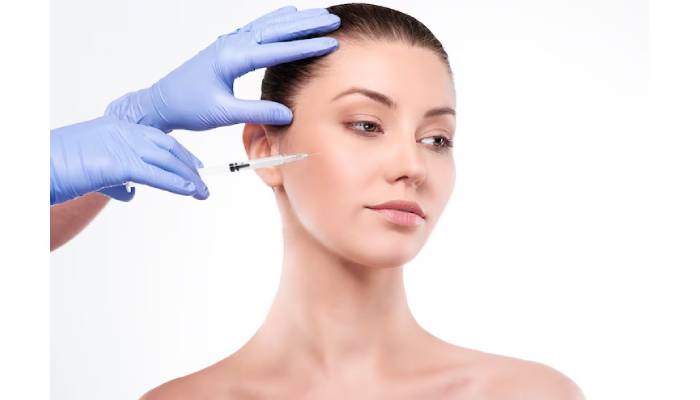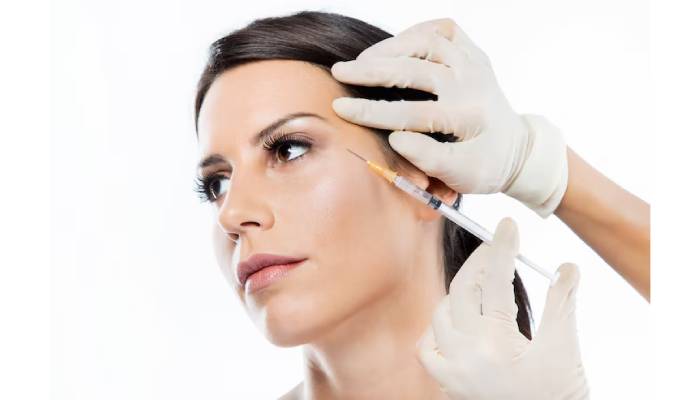
Caring for your skin after Botox injections is important to ensure the best results. First, avoid touching or rubbing the treated area for at least 24 hours to keep the toxin from spreading. Try to stay upright for about four hours post-injection; this helps prevent migration of Botox. Also, limit any strenuous activities that could cause swelling for 24 hours. Applying a clean ice pack can soothe discomfort, and it’s wise to avoid heat exposure too—no saunas or direct sunlight! Don’t use makeup or skincare products on the area right away, and remember to hydrate well. Keep an eye out for side effects and follow your provider’s advice closely.
1. Avoid Touching the Treated Area
After receiving Botox injections in Atlanta, GA, it’s crucial to avoid touching the treated area for at least 24 hours. This precaution helps prevent the spread of the toxin, ensuring it stays localized where it was injected. Even gentle touching or rubbing can inadvertently shift the Botox to unintended muscles, potentially affecting your results. For instance, if you were injected in the forehead, touching that area might cause the Botox to migrate to nearby muscles, leading to uneven results or unwanted effects. Keeping your hands away from your face also minimizes the risk of introducing bacteria that could cause infection. Remember, the first day post-treatment is vital for achieving the best outcomes.

2. Stay Upright After Injections
After receiving Botox injections, it’s important to stay upright for at least four hours. This helps to ensure that the Botox remains in the intended areas and reduces the risk of it migrating to other parts of your face. For instance, if you were to lie down right after treatment, there’s a chance that the product could move, leading to uneven results or unexpected areas of paralysis. So, whether you’re catching up on a show or enjoying a book, find a comfortable position to sit and relax. Avoiding lying down during this crucial time can make a significant difference in the outcome of your treatment.
3. Limit Physical Activity Post-Treatment
After receiving Botox injections, it’s important to limit physical activity for at least 24 hours. This means avoiding strenuous exercise, heavy lifting, or any intense physical activities that could increase your heart rate or blood pressure. Engaging in such activities can lead to swelling and bruising at the injection sites, potentially affecting your results. For instance, if you usually go for a run or hit the gym right after your appointment, consider taking a break and allowing your body to rest. Light walking is usually fine, but listen to your body and prioritize gentle movements. This precaution helps ensure that the Botox remains where it was injected, giving you the best possible outcome.
4. Ice the Injected Areas
Applying ice to the injected areas can be a simple yet effective way to manage any discomfort and swelling that may arise after Botox injections. Use a clean ice pack or a cloth filled with ice and gently place it on the treatment sites for about 10 to 20 minutes. This can help constrict blood vessels and minimize inflammation. Just be sure not to apply ice directly to the skin; wrapping it in a cloth or using a commercial ice pack will prevent frostbite. If you notice any unusual swelling or discomfort that persists, it’s a good idea to reach out to your healthcare provider for advice.
5. Avoid Heat Exposure
After getting Botox injections, it’s crucial to avoid exposing your skin to heat for at least 24 hours. This means steering clear of saunas, hot tubs, and even direct sunlight. Heat can increase blood flow to the treated area, which may lead to more swelling or bruising than necessary. For instance, if you plan on spending time outdoors, consider wearing a wide-brimmed hat or using an umbrella to shield your skin from the sun. Keeping your environment cool can help in reducing any discomfort and ensuring that the Botox settles properly, giving you the best possible results.
6. Skip Skincare Products
After receiving Botox injections, it’s crucial to give your skin a break from any skincare products for at least 24 hours. This means no makeup, creams, or serums on the treated areas. Applying these products too soon can increase the risk of irritation and may interfere with the Botox’s effectiveness. For example, ingredients like retinol or exfoliants can be harsh and might aggravate the skin. Keeping the area clean and product-free allows the Botox to settle properly and minimizes any potential side effects. This temporary pause helps ensure that your skin heals effectively and that you achieve the best possible results.
- Avoid exfoliants, such as scrubs and acids.
- Steer clear of alcohol-based toners.
- Do not use retinoids or retinol products.
- Skip any harsh chemical peels.
- Refrain from using heavy moisturizers that may clog pores.
- Avoid sunblock with heavy oils or fragrances.
7. Hydrate for Better Recovery
Staying hydrated is crucial for your skin’s recovery after Botox injections. Drinking plenty of water helps maintain skin elasticity and overall health. It can also aid in flushing out toxins that may accumulate after the procedure. Aim for at least 8 glasses of water a day, or more if you’re active. Herbal teas can also be a good option. For example, if you find plain water boring, add slices of lemon or cucumber for a refreshing twist. Remember, proper hydration can help reduce the likelihood of bruising and swelling, promoting a smoother healing process.
8. Follow-Up Care is Essential
After your Botox treatment, follow-up care is crucial for achieving the best results. Attending scheduled appointments with your provider allows them to assess your progress and make any necessary adjustments. These visits can also help address any concerns you might have, ensuring that you feel comfortable and satisfied with your results.
During these follow-ups, your provider will check for any side effects or complications that may arise and provide guidance on further aftercare. It’s also a chance to discuss your expectations and any additional treatments you might be considering in the future. Staying engaged with your healthcare professional not only helps you maintain optimal results but also builds a trusting relationship, making your journey smoother and more reassuring.